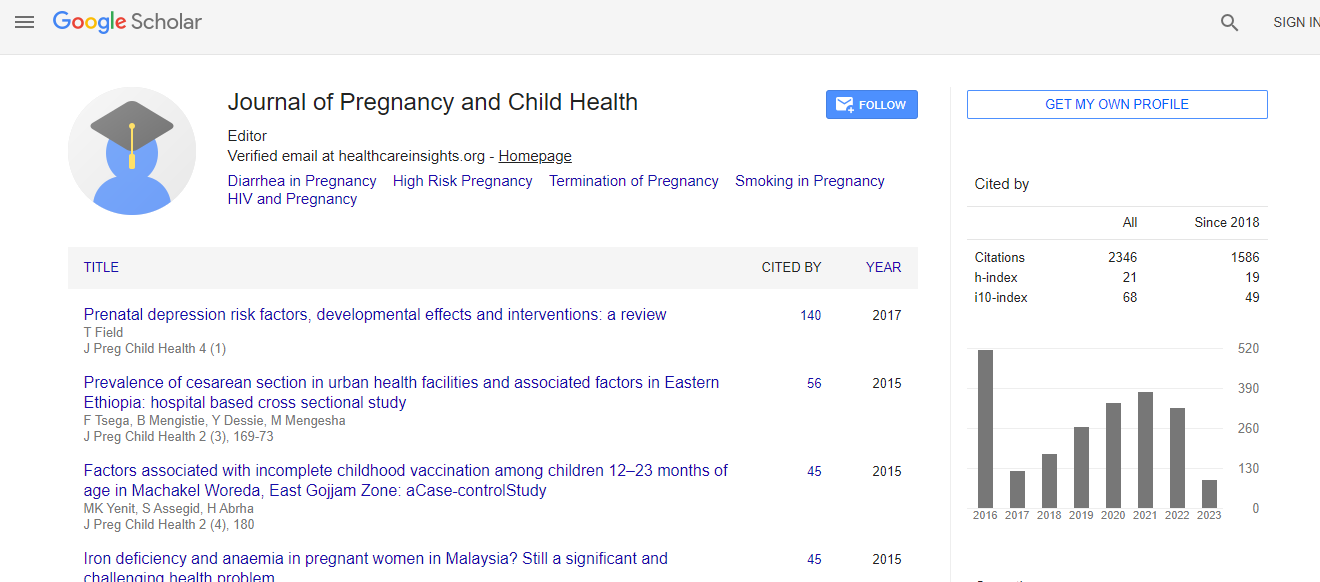Research Article
Feto - Maternal Outcome in Teenage Pregnancy - A Comparative Case Control Study
| Seneesh KV1* and Shah M2 | |
| 1Senior resident, Department of Obstetrics and Gynaecology, Government Medical College, Vadodara, Gujarat, India | |
| 2Assistant Professor, Department of Obstetrics and Gynaecology, Government Medical College, Vadodara, Gujarat, India | |
| Corresponding Author : | Seneesh KV Department of Obstetrics and Gynaecology Government Medical College Vadodara, Gujarat, India Tel: 918547526770 E-mail: drseneeshkv@gmail.com |
| Received November 27, 2014; Accepted February 12, 2015; Published February 18, 2015 | |
| Citation: Seneesh KV,Shah M (2015) “Feto - Maternal Outcome in Teenage Pregnancy - A Comparative Case Control Study”. J Preg Child Health 2:136. doi: 10.4172/2376-127X.1000136 | |
| Copyright: © 2015 Seneesh et al. This is an open-access article distributed under the terms of the Creative Commons Attribution License, which permits unrestricted use, distribution, and reproduction in any medium, provided the original author and source are credited. | |
Abstract
Introduction: Teenage pregnancy is a concern from the obstetric and social- economical point of views. This study aims to examine it in such a perspective.
Aims and Objective: To study the epidemiological aspects and clinical feto-maternal outcome of Teenage pregnancy.
Materials and Methods: A Tertiary hospital based prospective case control study with 70 cases and 70 controls, investigated on socio - demographic profile and feto- maternal outcome.
Result: Of the 4098 total confinements during the study period, incidence of teenage pregnancy was 2.81 %. The overall incidence of complications was 30%. Statistically significant occurrence (P<0.05) of preterm births (17.1%), severe PIH (17.1%) and severe anaemia (11.4%) amongst the mothers and low birth weight (77.2%) and prematurity amongst the neonates was noted. Perinatal mortality was 8.6%. The incidences of caesarean sections were statistically higher in the cases (22.9%). The teenage mothers were mostly from low socio economic strata, had poor compliance with antenatal care and poor knowledge, attitude and practice regarding reproductive health.
Conclusions: Teenage pregnancies constitute a risk factor for poor obstetric outcome. Teenage mothers are more likely to develop preterm births, severe PIH, severe anaemia and their neonates low birth weight and prematurity. Cultural practices, poor socioeconomic conditions, low literacy rate and lack of awareness of the risks are some of the main contributory factors. Appropriate preventive strategies need to be taken at various levels to circumvent the problem.

 Spanish
Spanish  Chinese
Chinese  Russian
Russian  German
German  French
French  Japanese
Japanese  Portuguese
Portuguese  Hindi
Hindi 
